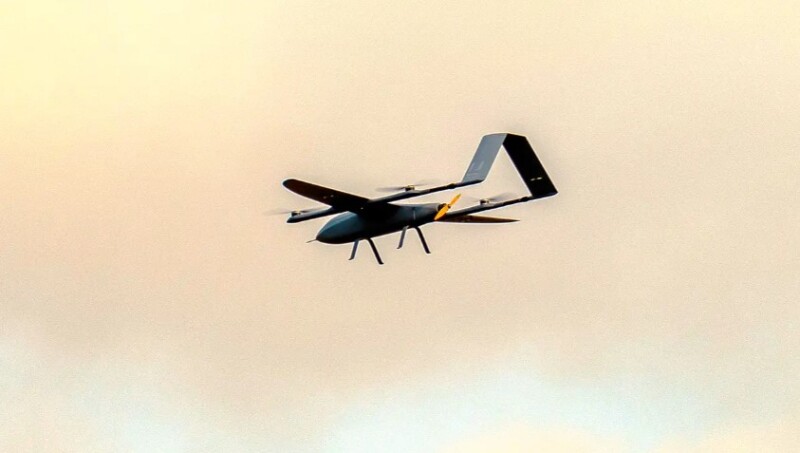We keep coming back to the issue of what is needed for uncrewed flights beyond the visual range of the operator (BVLOS) to be a reality in the national airspace (NAS). The initial list of six elements continues to be published without controversy or challenges, but if you disagree with it when you read it, please let us know.
- Regulation,
- Uncrewed Traffic Management (UTM),
- Detect and Avoid (DAA),
- Redundant Communications,
- Emergency Systems,
- Ground Infrastructure.
For a more detailed explanation of each, see our article on DAA published on April 26.
Today, we would like to explore deeper into the issue of redundant communications and how they fit into the larger picture, as well as the technology’s state of the art.
On August 12, 2023, ten driverless taxis in San Francisco caused a massive traffic jam when the cellular network collapsed around a concert venue and communications were lost. What happened was simple and predictable, but everyone was taken by surprise. Thousands of adoring fans inside the music hall were live streaming the event on their smart phones and the cellular network could not handle the volume of data and simply shut down.
Fortunately for the pedestrians and other cars surrounding the failed vehicles, the worst thing that happened was that the driverless taxis simply stopped, not knowing what to do next. In the case of aircraft, the consequences would have been rather different and predictably more consequential.
This is an important lesson for an industry that is putting pressure on the Federal Aviation Administration (FAA) to release the BVLOS (Beyond visual line of sight) regulation, or Part 108, as we have decided to call it.
Are we ready to launch thousands of drones into the sky knowing that there will be no interruption on communications similar to the San Francisco event?
On May 16, President Biden signed the 2024 FAA Reauthorization Act in which the federal agency is directed to issue the BVLOS regulation within 20 months. More specifically Section 930 mandates the FAA to develop a final rule on beyond visual line of sight flights within that time frame. This mandate requires the FAA to develop a proposed BVLOS rule (possibly a notice of proposed Rulemaking or NPRM) within four months of the passage of the reauthorization bill, with a final rule to follow within 16 months. That initial deadline of these four months is September 16 and that is just a few days after Commercial UAV Expo 2024 in Las Vegas. It will be interesting to see and hear what the FAA officials attending the event will have to say so close to their deadline.
But in the meantime, let us analyze where we are in terms of communication technology necessary to make BVLOS flights a reality.
Knowing the vulnerability of the cellular infrastructure and the fact that it was never designed to provide a 100% certainty of communication, 100% of the time, alternative methods of maintaining contact with the operating base need to be developed.
One possible solution is satellite communications, but it has been said that it is too expensive to be a realistic substitute. Now companies that traditionally have worked exclusively in the realm of WIFI or cellular networks are exploring alliances with satellite communication companies in an effort to offer a hybrid alternative.
On March 26, uAvionix announced that it has been awarded a Federal Aviation Administration (FAA) contract to advance the commercial use of Uncrewed Aircraft Systems (UAS) in the National Airspace System (NAS). The contract aims to develop highly reliable Command and Control (C2) communications for extended Beyond Visual Line of Sight (BVLOS) operations across challenging terrains.
Exactly a month later, on April 26 uAvionix and Viasat announced a strategic alliance agreement to develop products and services for the uncrewed aerial vehicle (UAV) market, and also that it has begun integrating Viasat’s Velaris module into its compact muLTElink airborne radio system.
So, the question is, are these two different announcements related?
We reached out to our friend Jon Damush, CEO of uAvionix for an exclusive conversation about what these two announcements mean for the advancement of BVLOS flights in the NAS.
“The current practice for BVLOS flights in the National Airspace involves obtaining FAA waivers or exemptions, which often rely on a single active C2 link with a single alternate standby link,” said Jon. “Challenging terrain conditions can significantly impact the availability of both the primary and alternate links resulting in difficulties satisfying the risk analysis for the BVLOS approval, or worse a lost link condition and failure of the UAS mission. uAvionix, in collaboration with the FAA, will work on a system that integrates cellular networks, satellite communications, and aviation protected C-Band into an assured C2 communications system consisting of multiple concurrent links using both frequency and path diversity to minimize the risk of lost links over adverse topography.”
In other words, the regulator in charge of the NAS is actively working with industry to advance the cause of BVLOS flights and that is a hopeful sign for the industry.
But how do we mix that with the ADS-B mandate in the USA for general aviation (GA)? On January 1, 2020, every GA aircraft was required by law to comply with ADS-B in a move that took ten years to implement and was fought hard by the GA community. At the end, the FAA prevailed, and everyone is safer because of it.
Now with the potential for thousands of drones in the air, a new concept has emerged, Electronic Conspicuity (EC). An umbrella term for a range of technologies that, in their most basic form, transmit the position of the host aircraft to other airspace users operating compatible equipment. More advanced devices can also transmit and receive, displaying and alerting pilots to other/conflicting traffic who have compatible EC devices. EC devices turn the traditional ‘see and avoid’ concept into ‘see, BE SEEN, and avoid’.
“We are firm believers in Electronic Conspicuity and there are signs from GA membership organizations in the country that support the idea,” Jon said emphatically. “We are helping uncrewed aircraft manufacturers to obtain certifications by making sure that cooperative and non-cooperative aircraft are all visible to each other.”
One thing is for sure, with the President signing the FAA Reauthorization Act of 2024 and the clear mandate to release a BVLOS regulation within 20 months, the federal agency will be working closely with technology companies such as uAvionix and many others to make sure the communications framework exists to ensure uninterrupted communications and the safety of everyone in the National Airspace.















Comments